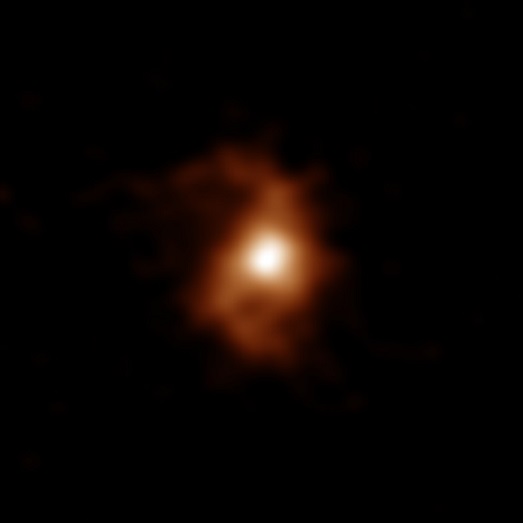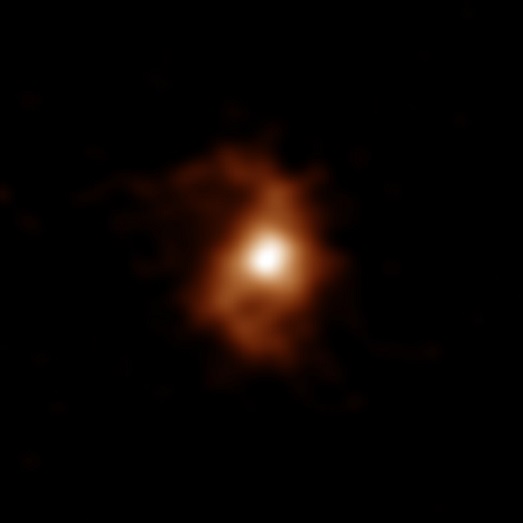On a usual workday at the space museum...
My friend asked: When will you bring me to space?
My mom asked: I was once watching the alien autopsy on TV. Is it true?
My kid asked: How many stars are there in the sky?
A student asked: Dark matter? Dark energy? Black hole?
The public asked me: When will our Sun die?
And...is there an end to the Q & A session?
Takafumi Tsukui, a graduate student of The Graduate University for Advanced Studies, SOKENDAI, and his mentor, Professor Satoru Iguchi, uncovered the oldest spiral galaxy BRI 1335-0417. Their findings were published in the journal "Science" last month.
BRI 1335-0417 galaxy existed 12.4 billion years ago when it was just about 1.4 billion years after the Big Bang. The research team analysed the data of the detection of emission from Carbon ions in the galaxy BRI 1335-0417 by the Atacama Large Millimeter/Submillimeter Array (ALMA) telescope. The rotating disk of this galaxy is revealed clearly in the image mapped from the data (image attached). The team also derived that the spiral arms are part of the galaxy structure from its rotating speed.
Scientists generally believe that spiral galaxies take time to evolve, but now they have discovered this giant spiral galaxy formed just within 1.4 billion years after the Big Bang. It could help understand the formation and evolution of galaxies and stars in the Universe. Whether this galaxy will eventually become a giant elliptical galaxy or remain a spiral galaxy for a long period of time is still cloaked in mystery (we will have to wait another 12.4 billion years to know what it looks like now!), nevertheless, with the advancement of observation technology, we shall see and discover more in future.
Astronomy and cosmology are subjects that come with endless questions and discoveries. Even though we can search for the questions and answers within the boundary of the observable Universe, there are still over 95% of the matter in the Universe that remains unknown to us (including dark energy and dark matter). Everything that we can see or observe, including our Earth, stars, planets, galaxies, etc., account for less than 5% of the matter in the entire Universe. With the launch of the new space telescope and enhancement of computing power, what more and how much further we will see?"
After writing this article...let me just continue working on answering enquires.



